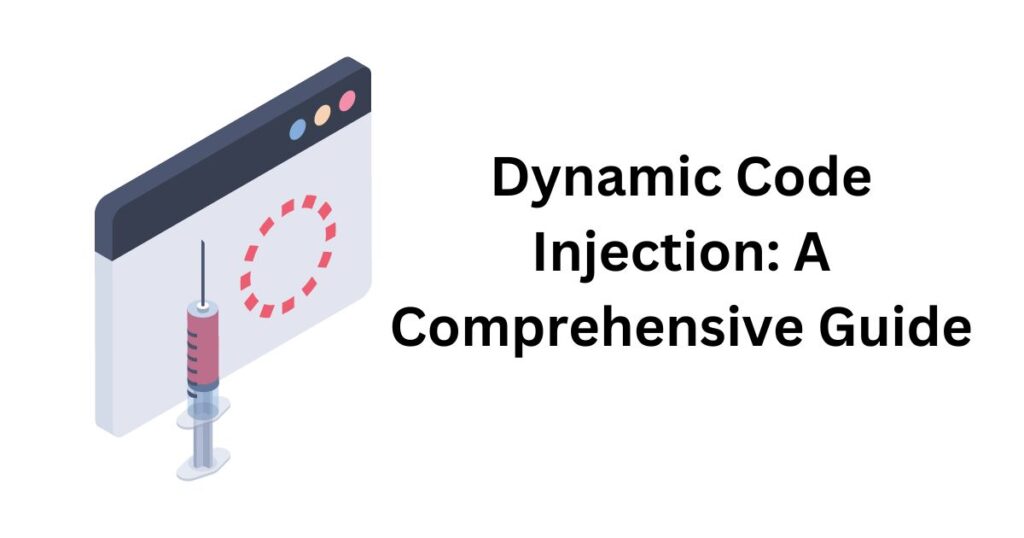Dynamic code injection is a cutting-edge technology that has become increasingly significant in today’s digital landscape. This powerful technique allows for the modification or execution of code at runtime, enabling flexibility, adaptability, and innovation in software applications. However, it also raises significant security concerns if misused. In this article, we will explore dynamic code injection, its applications, benefits, risks, and how to implement it securely.
What is Dynamic Code Injection?
Dynamic code injection refers to the practice of adding, modifying, or executing code while a program is running. Unlike static programming, where the code is fixed at compile time, dynamic code injection allows changes to occur on the fly. This capability is particularly useful in scenarios where adaptability is crucial, such as debugging, testing, or enhancing software functionality.
Key Features of Dynamic Code Injection:
- Runtime Flexibility: Code can be adjusted or inserted without restarting the application.
- Improved Debugging: Developers can fix issues or test features in real-time.
- Customizability: Allows programs to adapt to specific user needs dynamically.
Applications of Dynamic Code Injection
Dynamic code injection is widely used across various industries and technologies. Below are some of its key applications:
- Debugging and Testing: Developers use dynamic code injection to identify bugs and test new features without redeploying the software. Tools like debuggers often rely on this technique.
- Performance Optimization: Real-time analysis and optimization of application performance can be achieved through dynamic injection techniques.
- Security Penetration Testing: Ethical hackers use dynamic code injection to test software vulnerabilities and ensure robust security measures.
- Gaming: Modifying or adding features to games while they’re running is a common use case.
- Cloud Computing: In dynamic cloud environments, code injection helps in managing resources efficiently and responding to changing conditions.
- Artificial intelligence: AI models often necessitate instantaneous updates to algorithms or data-processing routines.
Advantages of Dynamic Code Injection
- Flexibility: Enables developers to make changes dynamically, reducing downtime and improving the user experience.
- Efficiency: Simplifies the process of updating applications without requiring extensive modifications.
- Enhanced Debugging: Allows developers to diagnose and resolve issues in real-time.
- Cost-effectiveness: Reduces the need for frequent recompilation and redeployment.
Risks and Challenges
Despite its advantages, dynamic code injection can pose significant risks if not implemented carefully.
- Security Vulnerabilities: Malicious actors can exploit this technique to inject harmful code, leading to data breaches or system compromise.
- Complexity: Managing and maintaining dynamically injected code can be challenging and may lead to errors.
- Performance Overheads: Injecting code at runtime can sometimes result in increased resource consumption.
- Compliance Issues: Certain industries with strict regulatory requirements may restrict the use of dynamic code injection due to potential risks.
Best Practices for Secure Implementation
To mitigate risks, follow these best practices when implementing dynamic code injection:
- Use Secure Libraries and APIs: Opt for trusted libraries to ensure that injected code does not introduce vulnerabilities.
- Implement Robust Authentication: Prevent unauthorized users from accessing or modifying injected code.
- Code validation: Validate all dynamically injected code to ensure it meets security and performance standards.
- Monitor and Audit: Continuously monitor the application for unusual activities and maintain logs for auditing purposes.
- Regular Updates: Keep the underlying software and tools updated to minimize exposure to known vulnerabilities.
How to Implement Dynamic Code Injection
Here is a step-by-step guide to implementing dynamic code injection safely and efficiently:
- Define Objectives: Clearly outline the purpose of the injection, whether it’s for debugging, optimization, or feature enhancement.
- Select Tools: Use reliable tools and frameworks that support dynamic code injection, such as Python’s
execfunction or Java’s Reflection API. - Write Secure Code: Ensure that the injected code adheres to best practices for security and performance.
- Test Extensively: Perform rigorous testing in a controlled environment before deploying the injected code.
- Deploy Gradually: Start with a small-scale deployment and monitor the application for potential issues.
Future Trends in Dynamic Code Injection
Dynamic code injection is evolving rapidly, and several trends are shaping its future:
- AI-Driven Code Injection: Artificial intelligence is being integrated with dynamic code injection to automate and optimize the process.
- Enhanced Security Mechanisms: Advances in security technologies aim to mitigate risks associated with dynamic injection.
- Widespread Adoption in IoT: Internet of Things (IoT) devices are increasingly leveraging dynamic code injection for real-time updates.
- Serverless Computing: Dynamic injection is playing a crucial role in the growth of serverless architectures by enabling seamless scaling and adaptability.
FAQs on Dynamic Code Injection
1. What is dynamic code injection used for?
Dynamic code injection is used for debugging, performance optimization, feature enhancements, and more, allowing real-time code modification and execution.
2. Is dynamic code injection safe?
While it offers numerous benefits, dynamic code injection can pose security risks if not implemented securely. Adhering to best practices mitigates these risks.
3. Which programming languages support dynamic code injection?
Languages like Python, Java, and JavaScript support dynamic code injection through various libraries and APIs.
4. Can dynamic code injection improve application performance?
Yes, it enables real-time optimization, leading to improved performance and user experience.
5. How do I prevent malicious code injection?
Use secure coding practices, validate injected code, and implement robust authentication and monitoring systems.
Conclusion
Dynamic code injection is a powerful tool that enables unparalleled flexibility and adaptability in software development. While it offers numerous advantages, it also comes with inherent risks that must be managed through secure implementation practices. By understanding its applications, benefits, and challenges, developers can harness the full potential of dynamic code injection to create innovative and efficient solutions. As this technology continues to evolve, its impact on software development and digital innovation is bound to grow.







